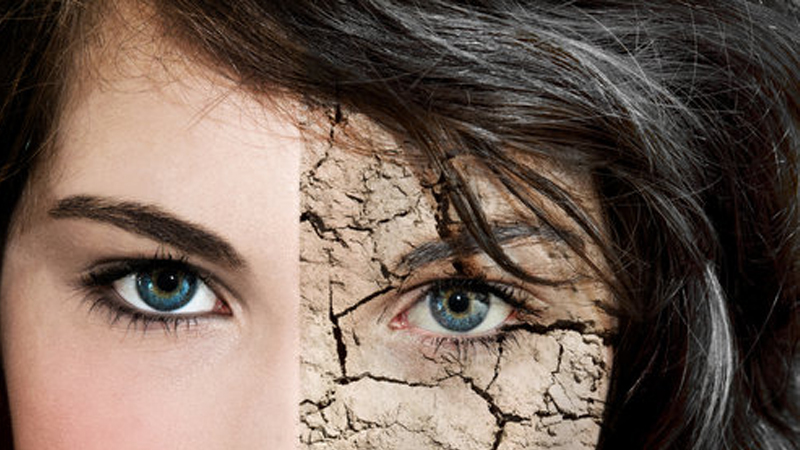Emotional Thawing Makes Borderline Feel Worse

Sometimes we feel as if we're getting worse instead of better. Sometimes we feel as if we're in more pain, not less. This is due to emotional thawing.
What Is Emotional Thawing?
Emotional thawing is like a case of frostbite. In physical frostbite, which occurs when a body part is overexposed or unprotected to cold, we lose sensation in that part and become numb. When we come out of the cold, we're first aware of being numb, then as the numbness faces we feel pain. The pain is a sign of healing.
The same is true with emotional pain. Invalidating environments lead you to question your worth, your feelings, your thoughts, your sensations, and so forth. This leads to a loss of physical and emotional awareness, called the "Detached Protector" mode, which leads to emotional numbness. When we reconnect, we become aware of our numbness, then we feel the pain of emotionally thawing. This too is a sign of healing.
Understanding that painful thawing is a stage in healing may help you tolerate it. However, it is important you have techniques to help you survive the pain.
Replacing the Detached Protector
 The Detached Protector mode is common in borderline personality disorder (BPD). People who self-injure to "feel something instead of nothing" are in this mode. Its function is to detach from people, deny needs and feelings, and comply in order to avoid real or perceived punishment. Signs and symptoms of this mode include emptiness, substance abuse, binge behavior, self-injury, overcompliance, depersonalization and psychosomatic complaints (for example, distress from an argument manifesting as chest pain).
The Detached Protector mode is common in borderline personality disorder (BPD). People who self-injure to "feel something instead of nothing" are in this mode. Its function is to detach from people, deny needs and feelings, and comply in order to avoid real or perceived punishment. Signs and symptoms of this mode include emptiness, substance abuse, binge behavior, self-injury, overcompliance, depersonalization and psychosomatic complaints (for example, distress from an argument manifesting as chest pain).
The goal of schema therapy is to replace the Detached Protector with a Healthy Adult. The Healthy Adult mode is a gradual process. It is characterized by improving self-esteem, using good communication skills to get needs met, recognizing and setting healthy boundaries, and is able to dwell in reality, not warped perceptions. The Healthy Adult comforts and nurtures us, and gives us tools to fight our symptoms.
The Healthy Adult mode can understand the pain of emotional thawing, and identify the needs underneath the pain. This pain typically is from one of three other modes: Abandoned Child, Angry and Impulsive Child, and Punitive Parent.
Abandoned Child
This mode is helpless to meet needs or protect itself. This is the part of you that carries the trauma of abandonment as a child. Symptoms of this mode are frantic efforts to avoid real or perceived abandonment and an idealized view of anyone who nurtures.
Ways to comfort the Abandoned Child are doing something soothing (I like burning incense), doing something to make you feel comforted or taken care of, and reminding yourself that people do love you. For example, I keep a nice notes file, which is filled with uplifting notes, e-mails and letters people have sent me. It works wonders at chasing the blues away.
Angry and Impulsive Child
The Angry and Impulsive child acts on impulse. It frequently uses negative coping skills to get needs met or vent feelings. This part frequently activates to protect from the pain of the Abandoned Child; many people would rather feel anger than pain. This mode is intensely angry, "manipulative", controlling, and often suicidal.
Techniques to calm and set healthy limits on the Angry and Impulsive Child often involve physical activity. Work out hard. Make a doll representing your rage, then tear it up. Hit a punching bag or a pillow. Some say that this reinforces violence, so be cautioned. If you feel as if you're going to hurt something living, call for help immediately.
A schema therapy manual notes "I've found that these things work even better if I rant at the thing I am cutting/tearing/hitting. I start out slowly, explaining why I am hurt and angry, but sometimes end up swearing and crying and yelling. It helps a lot to vent like that."
Punitive Parent
The Punitive Parent mode punishes the child modes for having needs and feelings. This is an echo of childhood trauma, and it persists into adulthood by causing self-abuse. Symptoms are self-hatred, anger toward self, and self-mutilation.
Techniques to cope with the Punitive Parent often deal with a harm-reduction philosophy. Instead of burning, hold ice. Instead of cutting, put a rubber band on your wrist and snap it. Bite into a garlic clove. However, this can sometimes make us want to hurt ourselves worse. If that happens, call for help immediately.
Emotional thawing can be painful, but we don't have to let it run our lives. By identifying the mode and responding accordingly, we can overcome the pain.
APA Reference
Oberg, B.
(2012, April 25). Emotional Thawing Makes Borderline Feel Worse, HealthyPlace. Retrieved
on 2025, December 22 from https://www.healthyplace.com/blogs/borderline/2012/04/when-it-feels-worse-emotional-thawing
Author: Becky Oberg
I've been directed here because I appear to be a BPD (diagnosed 2007) who is extremely emotionally stunted.
I have been borderline probably all my life - something I have looked at through psychodynamic therapy. My big BPD breakdown was because I am apparently high functioning so was able to manage my BPD to some extent although underlying BPD still puts issues into life, relationships and work. When my partner of 10 years and I started a slow breakup I went quite nuts. I started a lot of the more serious behaviours of BPD and was definitely in trouble.
After therapy a lot changed. Sure, many of the BPD weirdness started to calm down. Mostly now I'm really left with traits that are mostly manageable. My biggest issue now is an underlying depression that is mild but constant.
Now I have no friends when once they were important. I have no interest really. I tend to prefer times when everyone else has gone to bed, I'm alone and happy. I need to know people are in the house with me but I'm isolated. I hardly talk to family or my older kids, and my wife complains that I show her no affection, no love and she no longer feels special. Yet I know I still love her and need her in my life. It must be horrible for her and she is depressed over it making our lives together unpleasant. I've noticed a lot of schizoid traits in me but surely schizoid and borderline are too far apart to be co-morbid?
Thanks for building this blog. I can see that it must have taken a lot of work and courage. I especially love the name "More than borderline". Many, including healthcare professionals, may have a negative perception of a person upon hearing the diagnosis. But, people should be viewed as such. No one is just their mental disorder. The diagnosis is merely a reflection of the pain and suffering brought about by a certain context. Why should anyone be condemned by their suffering?